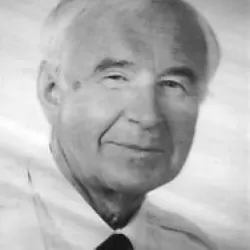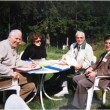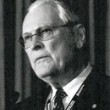
One of the BIG originals of veterinary orthopedics was Saki Paatsama. Born in an engineering family in Tampere, just 2 hours north of Helsinki in Finland, and with carpenters and boat builders in the family, Saki was preprogrammed to take a leading role in the carpentry of veterinary surgery.
Saki’s veterinary studies in Hannover, Germany (Tierärtztliche Hochschule) were interrupted by the 2nd WW, when he was called back to Finland to defend the country by caring for the army’s dogs and horses. After returning back to Germany he was imprisoned in a concentration camp. He managed to escape just before the Russian occupation and came back to Finland weighing less than 50 kilograms, which left irreversible damage in the tall man’s body.
After a few years on the Finnish country side with mixed practice, he jumped on an opportunity for advanced studies offered to young vets interested in devoting a career to academics. Finland didn’t have an own veterinary school, but one was now being planned and academic interest was in demand. Saki went to the Royal Vet School in Stockholm, where he explored among other things, the canine knee. This resulted in Finland’s own vet school’s first veterinary PhD thesis: “Ligament Injuries in the Canine Stifle Joint. A clinical and experimental study” in 1952. The Paatsama-operation, using a fascia lata strip to support the cruciate deficit stifle, was born. This technique, and it’s modifications, turned out to be the “gold standard” for three decades. Several other joint and bone pathologies were researched by Saki, which took him on numerous lecturing and teaching travels to both Europe and the USA.
He was also a member of the planning committee of the first vet school in Finland, which would be his home for more than 30 years, first as an associate professor and then as a full professor in surgery. This included parallel disciplines also such as anesthesiology, radiology, ophthalmology and neurology in both small animals and large, mainly horses. A huge task compared to todays standards. Furthermore, Saki lay the foundation of The Finnish Kennel Club’s breeding program, with screening routines for hip-, elbow and hereditary eye disease.
In addition to his extensive research and teaching career, Saki devoted much of his time to organisations within his field of interest. He was president of the European Society of Veterinary Surgery 1965 – 1966 and later, it’s honorary member; member of the board of the World Association of Veterinary Surgery 1965 - 1981; chair man of the Finnish Kennel Club 1974 - 1984, and later it’s honorary member; president of the World Small Animal Veterinary Association (WSAVA) 1978 - 1980; president of the European Society of Veterinary Orthopedics and Traumatology 1986 - 1991; honorary member of the British Small Animal Veterinary Association and the American College of Veterinary Surgeons. For 30 years Saki was also a member of the scientific committee of the World Kennel Organisation (FCI). Furthermore, Saki was a member of several domestic and international veterinary organisations and numerous Finnish organisations relative to breeding and health issues in dogs and horses.
A great visionary, hunter and fisherman and one of the fathers of veterinary orthopedics passed away in 1998, but his legacy lives on for generations to come.
In honor of Saki,
Ilkka Alitalo
Jan Räihä















